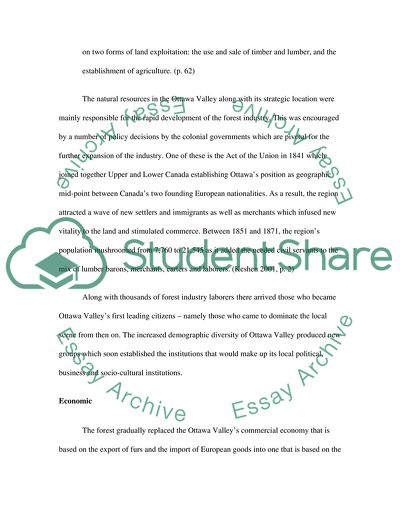Cite this document
(How did the Timber Industry Influence the Society of the Ottawa Valley Report, n.d.)
How did the Timber Industry Influence the Society of the Ottawa Valley Report. https://studentshare.org/social-science/1710277-how-did-the-timber-industry-influence-the-society-of-the-ottawa-valley
How did the Timber Industry Influence the Society of the Ottawa Valley Report. https://studentshare.org/social-science/1710277-how-did-the-timber-industry-influence-the-society-of-the-ottawa-valley
(How Did the Timber Industry Influence the Society of the Ottawa Valley Report)
How Did the Timber Industry Influence the Society of the Ottawa Valley Report. https://studentshare.org/social-science/1710277-how-did-the-timber-industry-influence-the-society-of-the-ottawa-valley.
How Did the Timber Industry Influence the Society of the Ottawa Valley Report. https://studentshare.org/social-science/1710277-how-did-the-timber-industry-influence-the-society-of-the-ottawa-valley.
“How Did the Timber Industry Influence the Society of the Ottawa Valley Report”. https://studentshare.org/social-science/1710277-how-did-the-timber-industry-influence-the-society-of-the-ottawa-valley.


